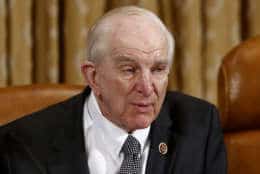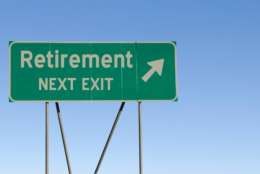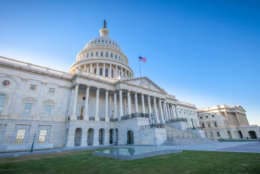Retirement
-
The White House wants to freeze federal pay, raise employee contributions to the pension fund and cut benefits when they retire.
March 07, 2018 -
GAO report found SSA in violation of Federal Vacancies Reform Act after agency goes 5 years without appointed commissioner, or even a nominee.
March 07, 2018 -
Federal employees must consider the tradeoffs before making the decision to retire. Tammy Flanagan joins Federal Drive with Tom Temin with some advice.
March 07, 2018 -
What are the top reasons federal workers are retiring in droves? Is it fear and loathing of the Trump administration, changes in the stock market or something else?
March 06, 2018 -
Are federal workers retiring in larger numbers? Are we on the verge of the so-called retirement tsunami that experts have been predicting for years? Find out when Federal News Radio reporter Nicole Ogrysko joins host Mike Causey on this week's Your Turn. March 7, 2018
March 06, 2018 -
Last month, 13,290 federal employees filed retirement claims with OPM, the highest number in a February since 2013.
March 06, 2018 -
2017's retirement numbers paled in comparison to those of the mid-years of the Obama administration.
March 05, 2018 -
For the first time, total assets in the Thrift Savings Plan's C fund matched total assets in the G fund.
March 02, 2018 -
Many financial planners urge clients investing for retirement to take the long-view. For many investors that is easier said than done.
March 02, 2018 -
It's a scientific fact that 62 percent of all federal workers in the Washington area born before 1994 suffer from advanced déjà vu syndrome.
March 01, 2018 -
Returns from the Thrift Savings Plan took a sharp downturn in February, reflecting corrections in the stock market that made for a volatile month.
March 01, 2018 -
If somebody said your federal pension plan needs $152 billion in nip and tuck surgery, would you be alarmed? Maybe you should be, says Senior Correspondent Mike Causey.
February 27, 2018 -
Most people retiring from the federal government are at least as well off as their retired private-sector friends and neighbors, in many cases better off.
February 26, 2018 -
Nearly 120,000 callers spent 5 minutes or longer waiting for a Thrift Savings Plan call representative to pick up the phone last month, a metric that's well short of the TSP agency's customer service goals.
February 26, 2018 -
The fund where federal workers have most of their retirement nest egg returned 2.3 percent last year, while the fund where they have the least amount invested returned 25.4 percent. What's wrong with this picture?
February 22, 2018















